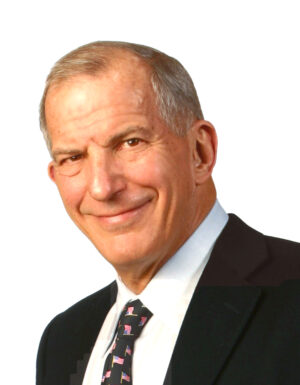No matter how simple or minimalist you want your practice to be, certain costs must be paid periodically. For today’s column (and future ones), I will cover some of the more common recurring expenses every law practice should consider.
Practice management software (optional). Personally, I don’t use practice management software. But many attorneys have recommended getting it as soon as possible because it is better to be familiar with it as your practice grows. This makes sense as you don’t want to switch your massive files to a new system. But on the other hand, if you don’t have clients, you don’t need software to manage your zero clients. Letterheads and billing templates can be found and downloaded online for letters and billing purposes. Some older attorneys may even send you a copy of their billing templates.
Once you start forgetting clients’ cases or forget to collect, that is a good sign that you may need a practice management software to help manage your caseload.
You can pay several hundred dollars up front for the software or have a monthly subscription. I would recommend trying out some of the more popular ones to see which fit your practice style better.
Phone and internet. These two expenses are mandatory for the modern, mobile lawyer. At a minimum you will need a smartphone with internet and email capabilities.
If you have an office at home or in a separate location, you probably won’t need a separate land-line service. But you will need a dedicated high-speed internet service.
Your smartphone should also be able to act as a mobile wifi hotspot for your laptop and your home desktop but should only be used for emergencies. It should not be a substitute for a dedicated wifi internet service because using your mobile phone’s wifi hotspot will drain the battery quickly and possibly overheat it, thus damaging the phone. Also, the download and upload speeds are very slow.
It is generally a good idea to have a separate line for your practice. Google Voice is free, easy to install, and for the most part gets the job done. However, other paid services may provide more or better services.
Pick the phone service that provides the best reception coverage where you work and where you live, even if it means paying more. A dropped call or bad reception can leave a bad first impression with a client.
As far as the monthly phone bill is concerned, most people have their own phone plans. But some opt to be a part of a family plan. This is a cheaper option because most companies charge up to $50 for an additional line.
Lastly, most people replace their phones every few years for various reasons. Due to the high cost, the phones are usually paid through installment agreements. This cost should also be factored into the costs.
Cloud storage expenses. More lawyers and clients are using the cloud to share documents. In light of the COVID-19 pandemic’s resulting in more business closures, electronic file-sharing will be used more frequently. It is also likely that more people will store their files in the cloud in order to avoid spending large amounts of time transferring files between computers.
Some of the more popular cloud sharing services are Dropbox and Hightail. Most of them have free services, but they have limitations on file storage and downloads. You may one day need to upgrade to a pay version if your practice requires large storage space. Most cloud storage services charge on average $12 to $30 per month.
Student loans. While some consider a student loan a personal loan, these payments should be factored into your budget because your student loan lender will want their monthly cut. Even if you don’t have the money.
If you are on an income-based repayment plan, you may be able to get your payments reduced by sending your loan servicer a profit and loss statement showing how much money you don’t make. This is much better than ignoring your debt and being placed in default status.
However, if you are on track to pay off the loans in full, I highly suggest paying more than the minimum payment. This way, you can skip a payment if you are short in the future. Also, if you just started repaying the loans, paying extra will reduce the loan principal which will also reduce future interest payments. Ideally, you should pay at least two years ahead, which should be enough time to get you through a recession.
Rent. At some point, you will need to pay rent, either for office space, a virtual office, or a mailbox address. While it is possible to work completely from home, most do not like the idea of clients or opposing counsel (particularly upset ones) knowing where they live.
You might have heard about all kinds of formal and informal rental arrangements for new attorneys or ultra-small practices. Generally, they involve using the office for limited purposes and only during certain days and times.
If you enter one of these arrangements, I highly recommend getting a key and being able to access the office during reasonable business hours. It is a major, frustrating pain when a time-sensitive document or a payment arrives and you have to wait for your landlord to be in the office to get it. Also, make sure that you have access to the office wifi at all times.
Also, some people might offer to let you use their office space for free. This might be from a friend, a grateful clien,t or another attorney. While this sounds generous and very tempting, I do not recommend accepting this arrangement at least for the long term. While I won’t get too much into the legal reasons for this, I should point out that your use of the space might violate the tenant’s lease contract, and landlords are itching for a reason to raise the rent.
But if there is a problem, you will be at your landlord’s mercy. You see, if your simple practice grows, you start to get more mail, and clients come to the office more frequently, at some point it will interfere with your landlord’s own operations. The landlord can be especially annoyed when he learns that you are making $8,000 per month while he is making $7,000 per month and paying $2,000 in rent and utilities. He will one day pull rank by demanding that you pay your share of the rent or move elsewhere. Since you are not paying, you may not have legal recourse due to lack of consideration.
Finally, these free arrangements hurt you in the long run because they delay the inevitable lesson: rent is a very common business expense and most people have to get used to paying it to have a legitimate business. You should eventually offer to pay rent as it will give you some recourse in case of a conflict. Also, it displays gratitude and respect, and you won’t come off as a freeloader.
Whatever rental arrangement you enter into, make sure that you have flexibility to do whatever you need to do to run your business.
A simple practice should keep costs as minimal as possible. But don’t be too cheap, especially if it will reduce your productivity.
Next week, I will cover more recurring expenses such as staff and malpractice insurance. If you have any other suggestions, please contact me.
Steven Chung is a tax attorney in Los Angeles, California. He helps people with basic tax planning and resolve tax disputes. He is also sympathetic to people with large student loans. He can be reached via email at sachimalbe@excite.com. Or you can connect with him on Twitter (@stevenchung) and connect with him on LinkedIn.








 Jordan Rothman is a partner of
Jordan Rothman is a partner of 








 Kathryn Rubino is a Senior Editor at Above the Law, and host of
Kathryn Rubino is a Senior Editor at Above the Law, and host of